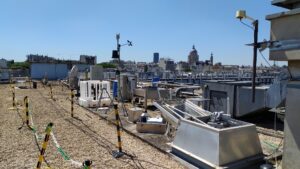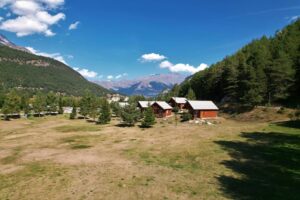Climate Change: a brief history of a consensus
Climate change is a phenomenon caused by greenhouse gas emissions from human activities. This simple statement is now an undeniable scientific reality and constitutes an extremely strong consensus. But how did the scientific community come to this conclusion? What is the history of this reliable picture?
In 1896, the Swedish physicist Svante August Arrhenius published work that would prove to be prophetic of current climate developments throughout the 20th century. Although he had already assessed the variations in CO2 concentrations in the atmosphere between the ice ages and the interglacial periods, obtaining values close to those available today, another question came to him: “He wondered what would happen if the CO2 concentration in the atmosphere increased as a result of human activities”, explains Gilles Ramstein, a palaeoclimatologist at the LSCE-IPSL climate and environmental sciences laboratory. “He found, using a fairly rudimentary calculation, that doubling the amount of CO2 would lead to an increase in temperature of around 4 or 4.5°C.” At the time, he imagined this increase over several thousand years, but almost 125 years later we know that it can happen much faster.
The first signs of this worrying development were observed as early as 1959 by Charles Keeling, at the first station measuring atmospheric CO2 concentration in Hawaii. Over the following decades, other teams carried out measurements all over the world, confirming a global trend: “Year after year, data revealed an increase in the quantity of CO2, as well as methane (CH4) and nitrous oxide (N2O),” says the palaeoclimatologist. How to tell if this development was “normal”? Past climates held the answer.
Comparing past and present
Climate science reached a turning point in the 1960s, when the development of computers gave scientists unprecedented computational possibilities: the equations of fluid mechanics could now be simulated in three-dimensional models representing the entire atmosphere. Climate model research took off, but it was still limited by the power of computing machines and the lack of simulation of the ocean, one of the two main heat-transporting fluids at the Earth’s surface with the atmosphere.
The 1990s saw the coupling of these two entities and at the same time, the possibility of producing long-duration simulations, necessary to model the slowness of ocean dynamics, much greater than the atmosphere. “Researchers have been able to study the effect of mountain ranges on climate, as well as the climatic contexts that led to the development of ice caps, but they have mainly been interested in the climatic impacts of variations in orbital parameters, which govern the periodicity of glacial and interglacial cycles,” explains Gilles Ramstein. Studying the causes of the alternation of these climatic phases was decisive for palaeoclimatologists, as it gave them the possibility of reconstructing past climates and comparing them with current data.
A discovery with political repercussions
In 1987, three publications demonstrated that it was possible to trace the atmospheric composition of past climates. This was made possible by air bubbles trapped under the Antarctic ice caps thousands of years ago, adding to our understanding of the Earth’s climate variations. “The samples showed that the concentration of CO2, before the appearance of human activities, had always remained within a small window of 180 ppm and 280 ppm, which varied according to the glacial and interglacial phases,” explains the researcher.
Written in 1978, the Charney report and the work of Hansen’s teams in particular alerted the political sphere and prompted the creation of the Intergovernmental Panel on Climate Change (IPCC) in 1988, which provided its first assessment of scientific knowledge on the climate in 1990. However, at the time, global warming was not entirely proven. Successive reports initially considered it as a risk, before asserting its certainty and specifying its temporal and spatial quantification from year to year.
Translated from Marion Barbé for IPSL






